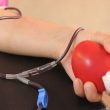Coronary calcifications pose a complex challenge with a high incidence (25% of all angioplasties), thus implying difficult management and adverse long-term outcomes, such as an increased risk of events, especially the need for repeat revascularization. The main mechanisms of long-term failure include stent underexpansion and, in particular, minimal post-deployment stent area. Intravascular lithotripsy (IVL) has...
SOLACI Research | Latin American Registry of Percutaneous Interventions in Coronary Bifurcations – LATAM Bif Registry.
We have the honor to invite you to participate in the Latin American Registry of Percutaneous Interventions in Coronary Bifurcations – LATAM Bif Registry. Coronary bifurcations represent a field of particular interest in interventional cardiology, representing 15-20% of coronary angioplasties performed in our daily practice. The LATAM Bif Registry is the scientific research program of the...
The Most Relevant Articles in Coronary Disease in 2020
01- Virtual ACC 2020 | Controversial Trial ISCHEMIA Finally in NEJM In November 2019, during the American Heart Association (AHA) 2019 Scientific Sessions, researchers presented this revolutionary trial that called the attention of all cardiologists. We had to wait until March to read the fine print; back then, a global pandemic such as the current one seemed...
Virtual ACC 2020 | TICO: Ticagrelor Monotherapy in Acute Coronary Syndromes
Switching to ticagrelor monotherapy after 3 months of dual antiplatelet therapy reduces major bleeding without paying a price in terms of ischemic events, compared with dual antiplatelet therapy for a year, in patients who had acute coronary syndrome and underwent angioplasty with a second-generation drug-eluting stent. Interrupting aspirin at 3 months and switching it for ticagrelor reduces...
Virtual ACC 2020 | TWILIGHT-COMPLEX: Ticagrelor Monotherapy in the Most “Dangerous” Angioplasties
The original TWILIGHT findings in more than 9000 patients who underwent angioplasty were presented last year at TCT and showed a 3.1% absolute risk reduction in BARC 2, 3, or 5 bleeding with no increase in death, infarction, or stroke in patients who received ticagrelor and placebo compared with patients who received ticagrelor and aspirin. All patients...
Radial Access Is Always Preferred, Even for Treatment of the Left Main Coronary Artery
The potential need for a 7-Fr guidewire, the use of several coronary guidewires and/or a kissing balloon, and the requirement of indispensable monitoring by intravascular ultrasound (IVUS) have been used by some interventional cardiologists as excuses to resist radial access. In that sense, left main coronary artery angioplasty was the last stand of femoral access....
Real-Life Functional Assessment of Coronary Stenosis: We Are Yet to Convert to It
The use of functional assessment of coronary stenosis (following the class IA recommendation in both American and European guidelines) is below 50% in daily clinical practice. Truth be told, most operators continue having blind faith in angiography. The inclusion of coronary physiology in the decision-making process has spread widely across countries, sites, and operators. The ERIS...
DKCRUSH-V: What Is Simple Is Not Always Best for the Left Main Coronary Artery
Courtesy of the SBHCI. Angioplasty of true distal left main bifurcation lesions with a double-kissing (DK) crush two-stent strategy, compared with provisional stenting, results in lower rates of target lesion failure at 1 year. These findings were largely driven by lower rates of target vessel infarction and definite/probable stent thrombosis. Read also: “EXCEL-QOL Substudy: Similar Quality...
Bifurcation Lesion in Distal Left Main Coronary Artery: One or Two Stents?
Courtesy of Dr. Carlos Fava. Unprotected left main coronary artery (LMCA) angioplasty has become an important trend in the last few years. One of the most significant unresolved questions about it is whether one stent is better than two in distal lesions, and how is their progress after treatment. This study included 937 patients who...
TCT Session. An assessment of the severity of lesions. A debate about the different methods to assess coronary physiology.
FFR is the gold standard (Dr. William Fearon) Dr. William reported on the benefits of using FFR: • A high degree of accuracy in identifying lesions that cause ischemia. • It allows you to specify angioplasty safely. • It improves results when compared to standard practice. • It is technically safe, easy to perform, economical...








